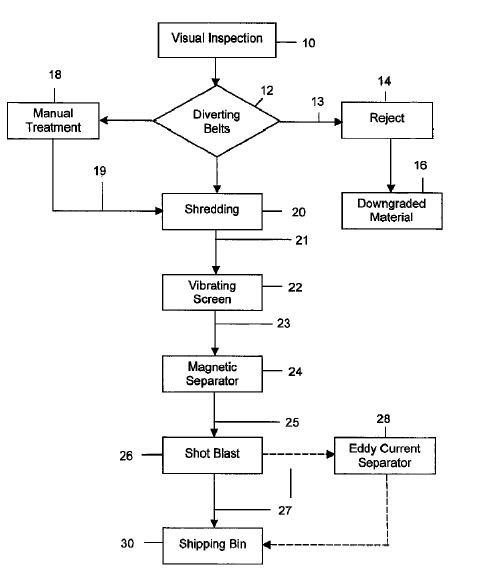Editors Note: Aluminum recycling into ingots and shape castings rates as one of the most successful “green” technologies in the world. The data gathered by the Aluminum Association and the International Aluminum Institute (IAI) are impressive, noting that 90-95% less energy is used in recycling aluminum than in primary production from ore and some 75% of all the aluminum ever produced is still being used today. In 2018, the global recycling input rate (RIR) was 32%, which is the proportion of recycled aluminum scrap in the metal produced, and the global recycling efficiency rate (RER) of aluminum from old and new scrap (internal scrap excluded) was 76%, which takes account of collection, processing, and melting losses. Results for RIR and RER vary region to region and country to country, but in every country, recycling aluminum has an economic impact. Mainly, because of the significantly lower energy needed in the production of recycled aluminum, and the lower price of secondary aluminum alloy compared to primary aluminum alloy. From 2019 to 2021, in the U.S. for example, this has resulted in about a threefold increase in secondary aluminum over primary aluminum production (Figure 1).
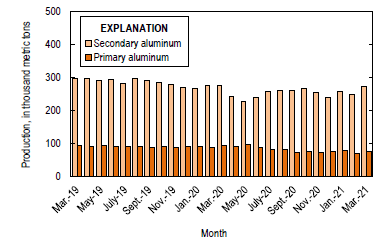
Furthermore, according to the Aluminum Association jobs survey for 2020, the U.S. secondary aluminum sector is estimated to employ 8,691 people, compared with 4,829 people for the primary sector. Simple economics and “green” strategies are prompting businesses to expand work aimed at improving the aluminum recovery rate in all phases of aluminum recycling, from collection and separation to melt processing, casting, and dross recovery. The recent U.S. and Canadian patents selected herewith are testament to the “green” focus not only of the North American aluminum industry, but also that of the international aluminum community.
— Joseph C. Benedyk, Editor
U.S. Patents
US11023837 — METHOD FOR THE OPTIMISATION OF PRODUCT PROPERTIES AND PRODUCTION COSTS OF INDUSTRIAL PROCESSES — Norsk Hydro ASA (Norway) — A method for optimization of product properties and production costs of industrial processes where a product is manufactured in several operations, Including the following steps: establishing process chain models (1-m) for each process (1-n), altogether (m x n) models for the calculation of product properties and product production costs, defining model inputs and outputs related to each of the (m x n) models for physical, chemical or biological parameters and costs of the product, defining limitations or minimum requirements related to each of the (m x n) models of product properties or process capacity or ability, –providing an optimizing tool linked to the input and output steps and model limitations performing iterations and flow of data between said steps to optimize the product based on customer requirements.
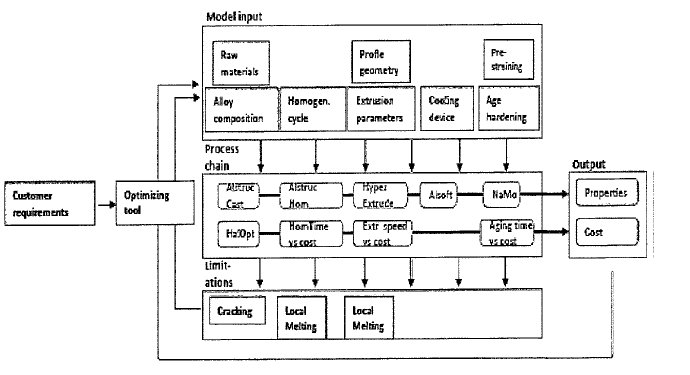
US11020798 — METHOD OF TRANSFERRING MOLTEN METAL — Molten Metal Equipment Innovations, LLC (USA) — The invention relates to systems for transferring molten metal from one structure to another. Aspects of the invention include a transfer chamber constructed inside of or next to a vessel used to retain molten metal. The transfer chamber is in fluid communication with the vessel so molten metal from the vessel can enter the transfer chamber. A powered device, which may be inside of the transfer chamber, moves molten metal upward and out of the transfer chamber and preferably into a structure outside of the vessel, such as another vessel or a launder.
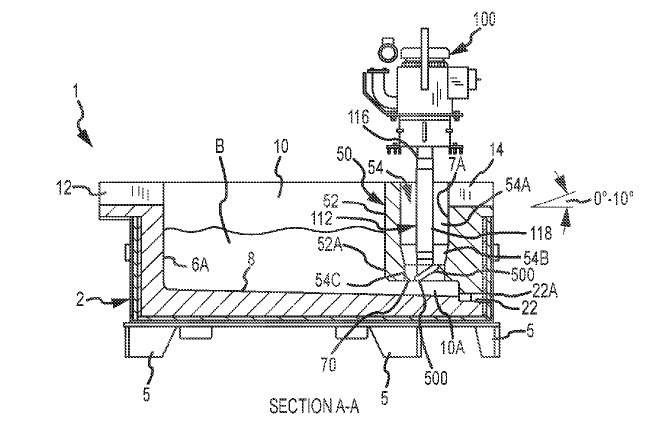
US10975461 — CASTING RECYCLED ALUMINUM SCRAP — Novelis Inc. (USA) — Described herein is a metal casting method comprising melting recycled aluminum into liquid metal; adding an alloying element to the liquid metal to form a modified liquid metal, the alloying element comprising magnesium, silicon, or copper; casting the modified liquid metal into a metal product, wherein the modified liquid metal includes at least 50% of a recycled aluminum; and rolling the metal product. Optionally, the rolling comprises hot rolling the metal product to a gauge for delivery, cold rolling the metal product to a gauge for delivery, or hot rolling and cold rolling the metal product for delivery. The gauge for delivery can be an intermediate gauge or a final gauge. The modified liquid metal can comprise magnesium in an amount of up to about 7 wt. %. In some cases, the modified liquid metal comprises magnesium in an amount of at least 1.5 wt. % (e.g., from about 1.5 wt. % to about 7 wt. % or from about 1.5 wt. % to about 4 wt. %). The method can further comprise reheating the metal product to an annealing temperature after the rolling, wherein the annealing temperature is below a solidus temperature for the metal product. Optionally, the casting can comprise continuously casting the modified liquid metal or direct chill casting the modified liquid metal. The recycled aluminum can comprise used beverage can scrap containing a mixture of recycled metal from can ends and can bodies. In some cases, the modified liquid metal comprises at least about 60% of the recycled aluminum (e.g., at least about 80% of the recycled aluminum). Optionally, the modified liquid metal can comprise a hydrogen content of 0.25 mL/100 grams or less. Also described herein is a metal product cast from recycled materials according to the method described herein.
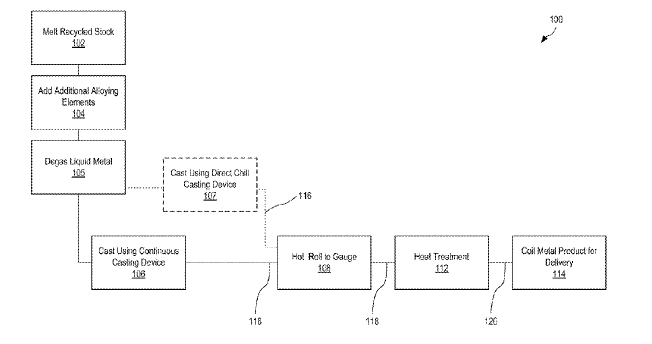
US10898928 — VISION AND ANALOG SENSING SCRAP SORTING SYSTEM AND METHOD — Huron Valley Steel Corporation (USA) — A system and a method of sorting scrap particles is provided. The particles may include a mixture of cast and wrought materials, such as cast aluminum alloy and wrought aluminum alloy. A moving conveyor containing scrap particles is imaged using a vision system to create a vision image corresponding to a timed location of the conveyor and is sensed using a sensing system to create a sensing matrix corresponding to the timed location. The sensing system has at least one array of analog proximity sensors. A control system analyzes the vision image as a vision matrix of cells and generates a vision vector containing vision data from the vision matrix for the particle. The control system analyzes the sensing matrix and generates a sensing data vector containing sensing data from the sensing matrix for the particle. The control system classifies the particle into one of at least two classifications of a material as a function of the vision data vector and the sensing data vector.
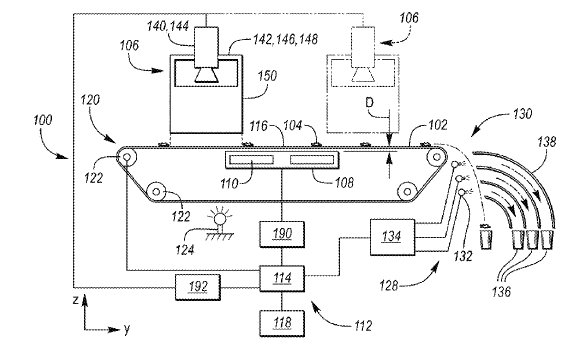
US10876188 — METHOD FOR RECYCLING SCRAP OF 2XXX OR 7XXX SERIES ALLOY — Constellium Issoire (France) — A method of manufacturing an aluminum alloy ingot using scrap aluminum alloy in the 2xxx or 7xxx series, and a fabrication method after rolling, extrusion and/or forging of an aeronautical structure comprising the steps in the above method, and then at least one rolling, extrusion and/or forging step of the aluminum alloy ingot in the series of scrap used. The invention is applicable particularly to recycling of scrap originating from fabrication processes used in the aeronautical and space industries.
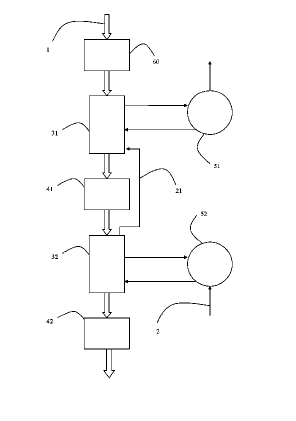
US10829836 — DROSS MANAGEMENT SYSTEM AND METHOD — Altek Europe Ltd. (Great Britain) — Aluminum dross may contain anywhere from ten percent to ninety percent aluminum depending on the processing technique and the type of furnace. Therefore, the dross in an aluminum melting operation includes a significant amount of aluminum metal that is considered a valuable resource to be recovered. A dross processing assembly includes a stirring station at which dross in a first dross recovery vessel is stirred and a pressing station at which previously stirred dross in a second dross recovery vessel is pressed simultaneously with the stirring of the dross in the first dross recovery vessel. The stirring station and the pressing station may be commonly housed in an enclosure. A conveyor system may advance dross recovery vessels through the dross processing assembly for continuous dross processing.
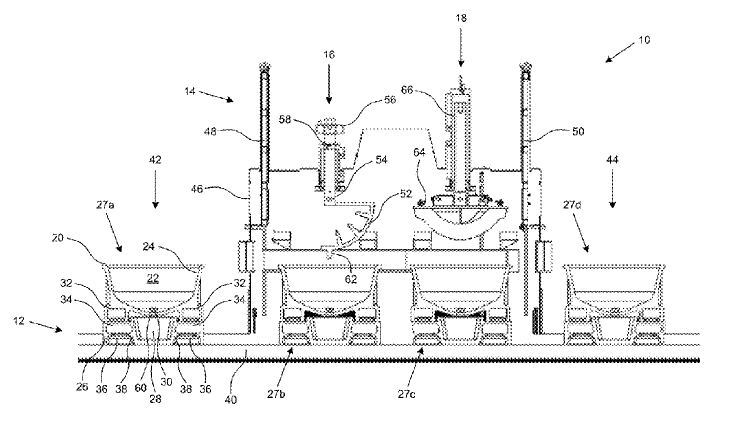
US10809005 — ADVANCED MATERIAL FOR MOLTEN METAL PROCESSING EQUIPMENT — Pyrotek, Inc. (USA) — A molten metal processing apparatus selected from a pump, a degasser, a flux injector, and a scrap submergence device constructed to include at least one element comprised of C/C composite. Although the present disclosure has been associated with aluminum, it is noted that the equipment described herein may be equally suitable for use with other motel metals (and their salts), including zinc, magnesium, and nickel, as examples. The charge well can be utilized to melt metal scrap. Various pieces of equipment have been developed to help submerge the scrap pieces and are referred to herein as scrap submergence devices. The dross well can be utilized to remove contaminants.
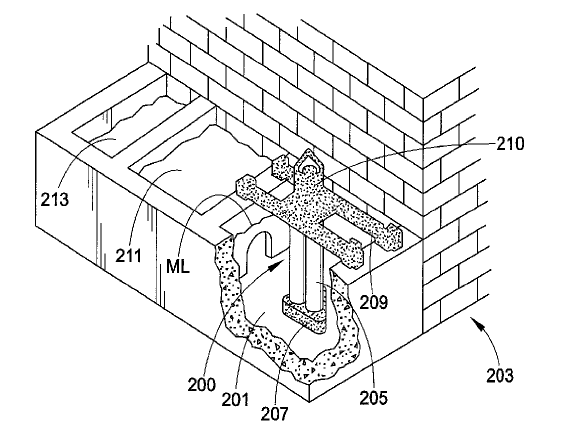
US10794858 — ALLOY IDENTIFICATION DEVICE — Palo Alto Research Center Incorporated (USA) — An electrochemical metal alloy identification device employing electrolytes to measure and identify different potentials of alloys is presented. This includes physical structure, disposables, electrical systems, control circuitry, and algorithms to identify alloys. While this disclosure focusses it examples on identification of different aluminum alloys, other metals, and metal-alloy systems, such as steel, bronze and gold systems can be identified with this method by an appropriate choice of electrolytes.
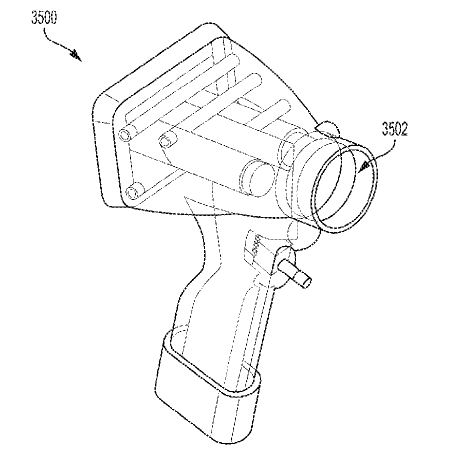
US10722922 — SORTING CAST AND WROUGHT ALUMINUM — UHV Technologies, Inc. (USA) — A material sorting system sorts materials utilizing a vision system that implements a machine learning system in order to identify or classify each of the materials, which are then sorted into separate groups based on such an identification or classification determining that the materials are composed of either wrought aluminum or cast aluminum.
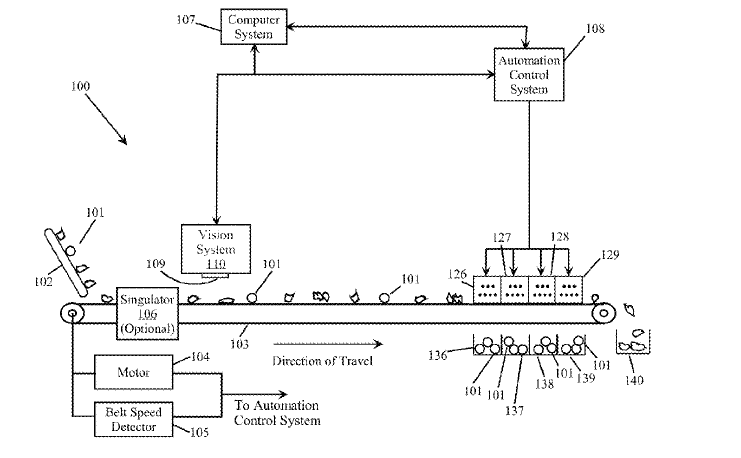
US10710119 — MATERIAL SORTING USING A VISION SYSTEM — UHV Technologies, Inc. (USA) — A material sorting system sorts materials utilizing a vision system that implements a machine learning system in order to identify or classify each of the materials, which are then sorted into separate groups based on such an identification or classification. The material sorting system may include an x-ray fluorescence system to perform a classification of the materials in combination with the vision system, whereby the classification efforts of the vision system and x-ray fluorescence system are combined to classify and sort the materials. Certain embodiments of the disclosure can sort aluminum alloy scrap pieces into separate bins so that substantially all of the aluminum alloy scrap pieces having a composition falling within one of the aluminum alloy series are sorted into a single bin and can also classify and sort aluminum alloy scrap pieces having compositions that would all classify them into a single aluminum alloy series (e.g., the 5000 series or the 6000 series) into separate bins as a function of their aluminum alloy composition. For example, certain embodiments of the present disclosure can classify and sort into separate bins aluminum alloy scrap pieces classified as aluminum alloy 5086 separate from aluminum alloy scrap pieces classified as aluminum alloy 5022.
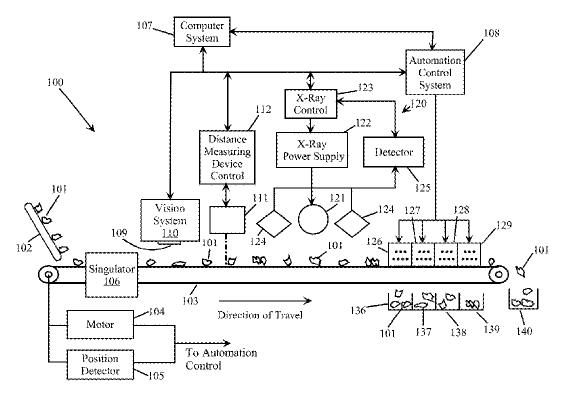
US10625304 — RECYCLING COINS FROM SCRAP — UHV Technologies, Inc. (USA) — It has been discovered that many automotive vehicles designated for shredding and subsequent recycling processes have a relatively significant number of monetary coins located within them, such as between the seats, underneath floor mats, etc. At least one study estimates that there can be about US$10-$15 of coins per vehicle. Likewise, such vehicles can contain lost jewelry. A material sorting system sorts materials utilizing a vision system that implements a machine learning system in order to identify or classify each of the materials, which are then sorted into separate groups based on such an identification or classification determining that the materials have a specified geometric shape. Such a system can sort monetary coins or other valuable metals from other forms of scrap.
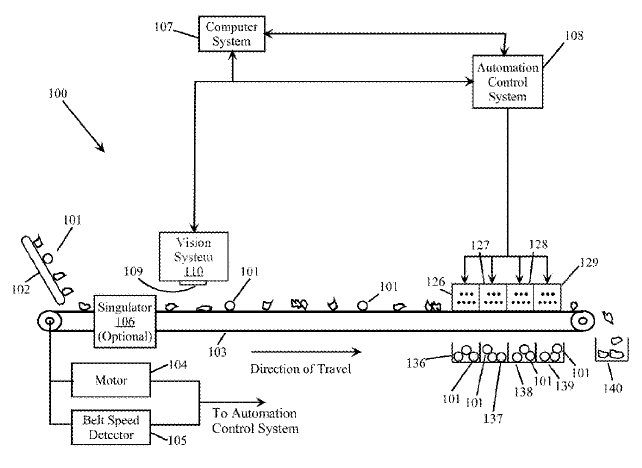
US10584402 — ALUMINUM ALLOY SLUG FOR IMPACT EXTRUSION — Ball Corporation (USA) — Novel recycled aluminum alloys are provided for use in an impact extrusion manufacturing process to create shaped containers and other articles of manufacture. In one embodiment blends of recycled scrap aluminum are used in conjunction with relatively pure aluminum to create novel compositions which may be formed and shaped in an environmentally friendly process. Other embodiments include methods for manufacturing a slug material comprising recycled aluminum for use in the impact extraction process. The alloy in one embodiment has a composition comprising a recycled 3105 or 3104 aluminum, and a relatively pure 1070 aluminum to form a novel recycled alloy. In one embodiment, a recycled aluminum alloy which utilizes 40% of 3104 alloy is blended with a 1070 alloy, and which comprises the following composition: approximately 98.47% Al, 0.15% Si, 0.31% Fe, 0.09% Cu, 0.41% Mn, 0.49% Mg, 0.05% Zn, 0.02% Cr, and 0.01% Ti.
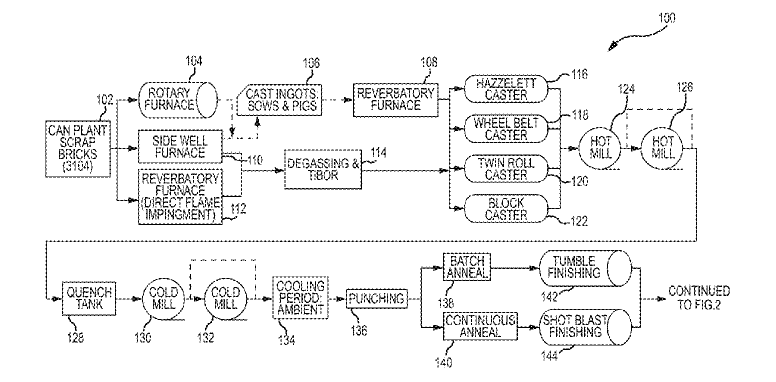
US10557207 — ELECTROREFINING OF MAGNESIUM FROM SCRAP METAL ALUMINUM OR MAGNESIUM ALLOYS — Phinix, LLC (USA) — The invention comprises methods and apparatuses for the electrorefining of Mg from Al or Mg alloy scrap. The present invention provides electrorefining cells and methods of use of such for continuous removal of magnesium, as either Mg or Mg-alloy from melted aluminum scrap. The present invention addresses a need for both purifying Mg and for reducing Mg content within melted scrap without resorting to undesirable chlorination to salt out Mg or using expensive pure Al to dilute the melted scrap. According to the present invention, Al alloy scrap containing Mg can be semi-continuously fed into an Al melter that already contains a substantial quantity of Al alloy melt with Mg content close to the Al alloy specification target. The molten Al alloy may be continuously circulated and recirculated from a melter through the electrorefiner cell described herein operated at a cell current that allows the amount of Mg that was added to the melter with scrap to be removed as pure Mg+Al (>90% Mg and <0.1% total of Si, Cu, Zn, Fe, Mn,). Consequently, Mg concentration in melt to be circulated back to the melter for producing Al alloy product remains at the desired Mg specification target concentration. The invention utilizes the density and charge features of Mg present in a melted alloy to continuously extract Mg and Mg alloys from a melted Al alloy feed.
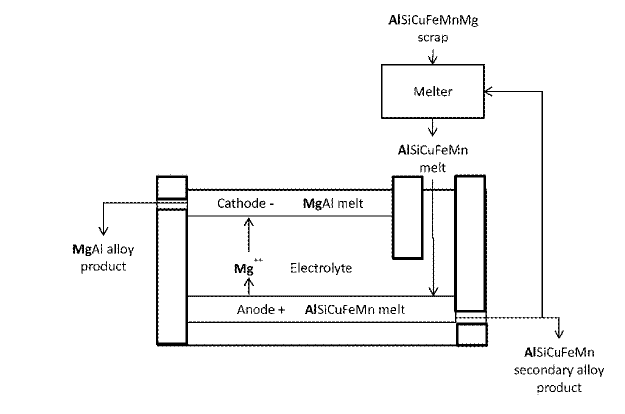
US10538833 — ANODIZED-QUALITY ALUMINUM ALLOYS AND RELATED PRODUCTS AND METHODS — Novelis Inc. (USA) — Anodized aluminum sheets are used extensively in architectural and lithographic applications. These premium architectural and lithographic products are typically manufactured from very high purity alloys to minimize surface defects such as linear streaks. However, the requirement for such high purity alloys severely limits the amount of recycled content that can be incorporated into anodized quality (“AQ”) products. Disclosed are alloys for anodized-quality aluminum sheets with improved surface quality, and methods for making these sheets. The alloys are designed to minimize the formation of cathodic intermetallic particles that result in surface streaks of anodized sheet products formed from the alloys. Further, the alloys allow the incorporation of recycled scrap aluminum in anodized-quality sheets. The present compositions and related products and methods can be utilized to make aluminum 5xxx series sheets for use in a variety of AQ applications, such as architectural and lithographic applications.
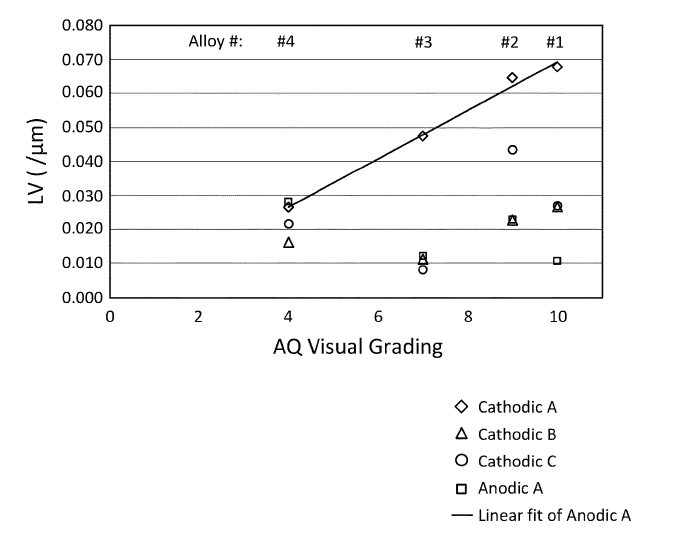
US10486209 — METHOD AND DEVICE FOR RECYCLING METAL SCRAP — Hydro Aluminium Rolled Products GmbH (Germany) — A significant statistical uncertainty concerning the actual composition of aluminum scrap exists, which is too high for an efficient recirculation of the scraps. If a mixture of scraps should remain undetected, that can lead to the entire melting furnace batch of up to 100 tonnes being outside of the specifications and in the worst case having to be scrapped. A method for recycling metal scraps, particularly aluminum scraps, is provided. In the method, an amount of metal scrap, particularly aluminum scrap, is provided in the form of a plurality of separated split lots. A composition analysis is carried out for each split lot and an item of composition information based on said composition analysis is associated with each split lot that has been analyzed. Also provided is a device configured for carrying out said method.
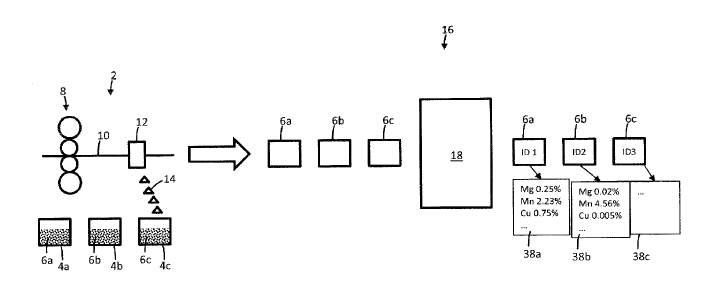
US10478861 — SYSTEM FOR ANALYZING AND SORTING MATERIAL — Hydro Aluminium Rolled Products GmbH (Germany) and Austin AI, Inc. (USA) — A system (1) for analyzing and sorting material (2) including a feeder (10) for transporting at least one piece of material along a feeding surface (15) towards and onto an upper portion (21) of a chute (20), a sorting device (50), a laser device (30), a spectrometer (40) configured to detect an emission from the piece of material and to produce an output signal corresponding to the emission, and a controller device configured to receive the output signal and to operate the sorting device. The laser device and the spectrometer are both provided on a level below the feeding surface. Also, the laser device is configured to produce a laser beam that can be incident on the piece of material when the piece of material is at least partially protruding from the chute or has fallen off from the chute via the lower edge of the chute and is airborne. According to embodiments, the system may be configured such that the laser beam is incident only on a piece of material that protrudes over the lower edge of the chute while it is still supported by the chute.
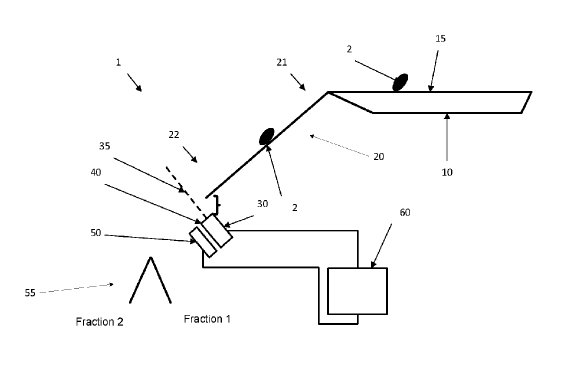
US10415128 — METHOD FOR MANUFACTURING ANODIZED ALUMINUM ALLOY PARTS WITHOUT SURFACE DISCOLORATION — The Boeing Company (USA) — A method for manufacturing a part including steps of (1) casting an ingot, (2) scalping the ingot to yield a scalped ingot, (3) homogenizing the scalped ingot to yield a homogenized ingot, (4) breakdown of the homogenized ingot to yield a slab, (5) rolling the slab to yield a rolled aluminum material, (6) annealing the rolled aluminum material to yield an aluminum starting material, (7) cold working the aluminum starting material to obtain an aluminum cold worked material, and (8) forming the part from the aluminum cold worked material. To yield an ingot having the desired composition, a molten mass may be prepared by combining and heating appropriate quantities of primary aluminum, scrap and master alloys.
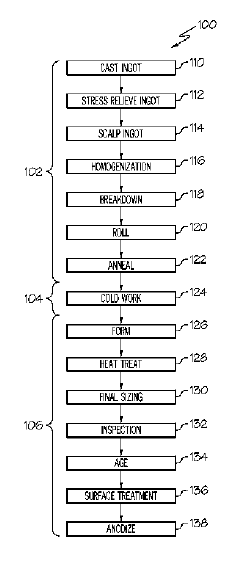
US10378083 — ALUMINUM DROSS PROCESSING — Taha International SA (Luxembourg) — A process and apparatus for recovering aluminum metal from aluminum dross, the process including skimming aluminum dross from a furnace containing molten aluminum into a dross processing receptacle, transporting and mounting the dross filled receptacle to a rocking device, and rocking the receptacle until aluminum pours from discharging outlets in the receptacle into a container for catching the molten aluminum which is placed underneath the rocking device. A preferred embodiment of a receptacle wherein the opposed walls 10, 11 of said receptacle are parallel in an upper portion and are convergent in the direction of the floor in a lower portion, such that the upper portion of said receptacle is cuboidal shaped and the lower portion is frusto-pyramidal shaped. This overall design reduces burning of the aluminum metal (`thermiting`) whilst minimizing heat loss from the hot dross.
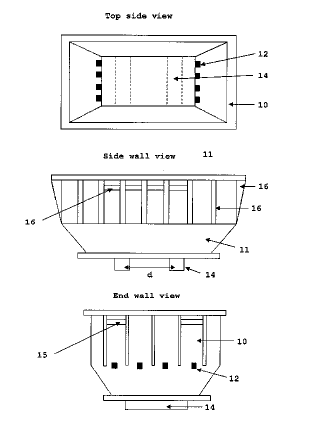
US10279871 — OFFSHORE FACILITY WITH METAL PROCESSING APPARATUS AND POWER GENERATION SYSTEM — TMT Pte. Ltd. (Singapore) — The present invention relates broadly to a offshore facility. The offshore facility comprise a floating platform; a metal processing apparatus disposed on the floating platform; and a power management module adapted to manage and provide a stable power supply to the metal processing apparatus. The processing plant on the offshore facility 100 may be configured to process steel or aluminum scrap metal. In this configuration, the steel or aluminum scrap metal processing plant may include metal processing apparatus 104 adapted to melt the steel or aluminum scrap metal. Pre-treated steel or aluminum scrap metal, which has been separated from foreign materials and shredded into appropriate size for handling, may be delivered directly to the offshore facility 100. Loading equipment may load the steel or aluminum scrap metal into a storage 110 on the offshore facility 100. To melt the steel or aluminum scrap metal, the metal processing apparatus 104 may include an electric furnace.
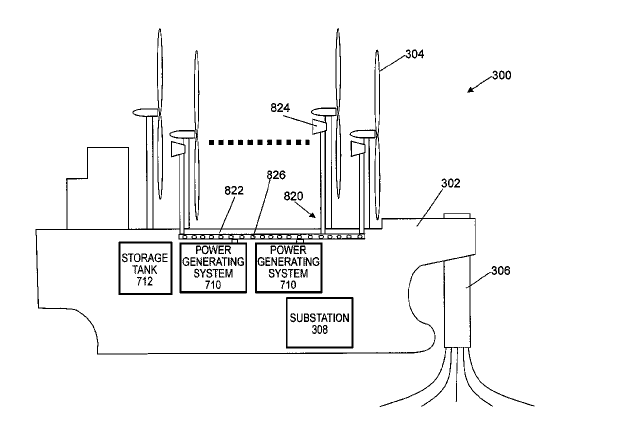
US10131967 — SCRAP SUBMERGENCE WALLED WELL — Pyrotek, Inc. (USA) — In the recycling of metals, it is necessary to melt scrap pieces for treatment and processing. A large portion of aluminum scrap pieces are thin walled as a result of the mechanical shaping action from which they are formed, such as, shaving, boring and cold rolling. Melting thin walled scrap pieces is particularly difficult because (i) extended exposure to the hostile atmosphere in a traditional melting furnace results in extremely high oxidation loss and, (ii) rapid submerging in molten metal is severely hampered by the fact that thin walled scrap pieces float on molten metal (“floating scrap”).A scrap submergence device having an open top chamber including walls constructed of a heat resistant material is provided. The chamber includes an inlet in the side wall of the chamber for receiving molten metal, an outlet in the side wall of said chamber, and an interior wall extending from the base wall. The interior wall has a height lower than a height of the at least one side wall. The inlet is disposed on a first side of the interior wall and the outlet is disposed on a second side of the interior wall.
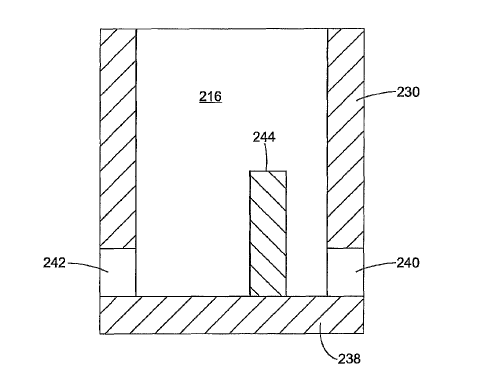
US10088425 — RAPID MATERIAL ANALYSIS USING LIBS SPECTROSCOPY — TSI, Incorporated (USA) — A laser induced breakdown spectroscopy (LIBS) measurement system is described herein that provides an orifice, aperture or opening in a substantially V-shaped chute or sleeve that allows access to the material to be analyzed from the underside of the chute. The laser beam is aimed through the hole and return light (signal) is collected through the hole by a photodetector assembly. A diverter device, which is located at an output end of the chute, diverts certain particles away from the chute upon receipt of an actuation signal. Primary applications for the LIBS systems taught herein include but are not limited to aluminum scrap sorters and secondary aluminum smelters which accept aluminum scrap, to value and verify the scrap as it comes in. Other applications include analysis of other non-ferrous metals, ferrous metals, refractory materials, and soils.
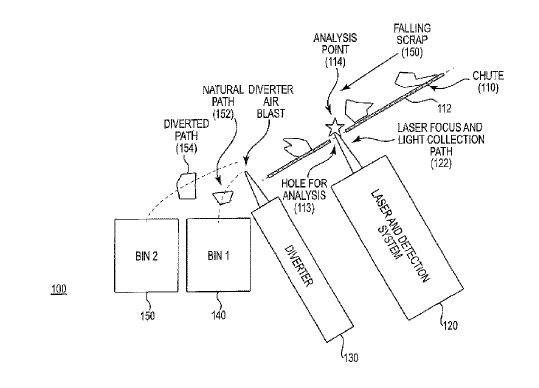
US10017867 — ELECTROREFINING OF MAGNESIUM FROM SCRAP METAL ALUMINUM OR MAGNESIUM ALLOYS — Phinix, LLC (USA) — The present invention provides electrorefining cells and methods of use of such for continuous removal of magnesium, as either Mg or Mg-alloy from melted aluminum scrap. The invention addresses a need for both purifying Mg and for reducing Mg content within melted scrap without resorting to undesirable chlorination to salt out Mg or using expensive pure Al to dilute the melted scrap and comprises methods and apparatuses for the electrorefining of Mg from Al or Mg alloy scrap. The invention utilizes the density and charge features of Mg present in a melted alloy to continuously extract Mg and Mg alloys from a melted Al alloy feed.
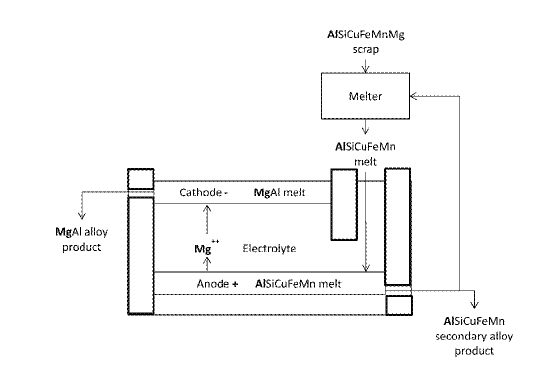
US9956609 — METAL SORTING, MELTING AND FABRICATION APPARATUS AND METHODS — Melt Cognition, LLC (USA) — Conventional aluminum casting processes typically require the addition of primary aluminum, such that the finished aluminum products are not cast solely using aluminum scrap from the scrap yard. According to some aspects, a system for producing a target molten metal composition is provided. The system includes a sorting device that sorts input pieces of metal based on a control signal. Sorted pieces of metal are melted in a furnace, and a sensor measures the composition of molten metal in the furnace and in response generates a control signal that is sent to the sorting device. The control signal may be based on a comparison of the received data with the target molten metal composition. Since metal loss and energy use may both be reduced in embodiments of the integrated system described herein compared with a conventional system, scrap metals that are not cost-effective to sort, melt and use in product fabrication within conventional systems may, to the contrary, be cost effective within the integrated system.
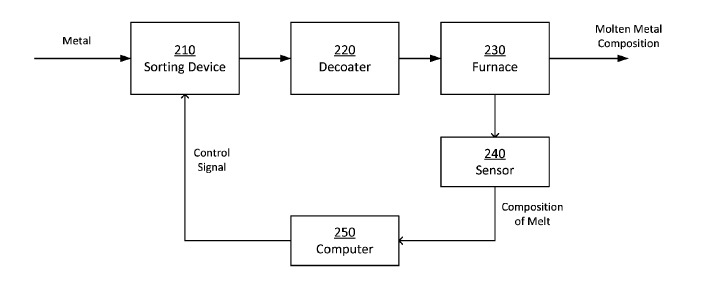
US9920992 — MOLTEN METAL SCRAP SUBMERGENCE APPARATUS — Pyrotek, Inc. (USA) — A metal scrap submergence device comprising an open top chamber including walls of a heat resistant material, an inlet positioned in a side wall of the chamber, an outlet positioned in the base of said chamber, and a ramp adjacent said side wall of the chamber. The side wall further includes a feature affecting molten metal flow. The feature can include, for example, a baffle, a vane, a passage, a diverging or converging shape and combinations thereof. Similarly, the molten metal flow can be affected by slanting the ramp inwardly or outwardly.
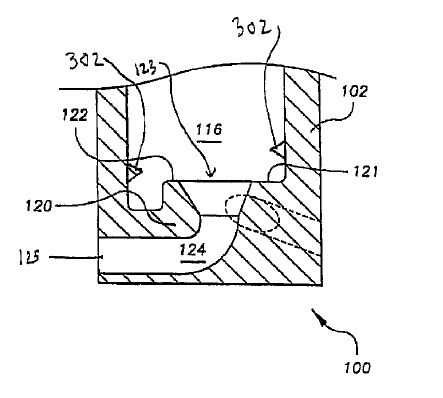
US9908202 — CLAD SHEET ALLOYS FOR BRAZING APPLICATIONS — Novelis Inc. (USA) — This application discloses a multilayer aluminum material comprising an aluminum alloy core and aluminum alloy cladding, wherein the aluminum alloy cladding contains 0.1-1.0 wt % Cu, 0.1-0.5 wt % Fe, 0.1-1.0 wt % Mn, 3-15 wt % Si, 0.005-0.15 wt % Ti and >3-≤7 wt % Zn, remainder Al. The aluminum alloy cladding can also optionally contain one or more of 0.001-0.3 wt % Mg, 0.001-0.01 wt % Ni or 0.001-0.05 wt % of at least one of Sr, Ca or Na. A process for producing the material is also described. The material can be produced in sheet form and is suitable for brazing application. The metal forms fabricated from the multilayer aluminum material by a process comprising brazing steps are also described. The present invention allows for recycling of wrought aluminum that commercial rolling and casting facilities produce. Cladding brazing alloys incorporated into the embodiments of the present invention can contain up to 100% or recycled aluminum, or “scrap.” In some cases, the only additional element to be added to scrap aluminum to produce the recycled cladding alloys is Si to achieve Si content required for the desired melting range, such as 7.5% Si or 10% Si. In some other cases, other additional elements may be added.
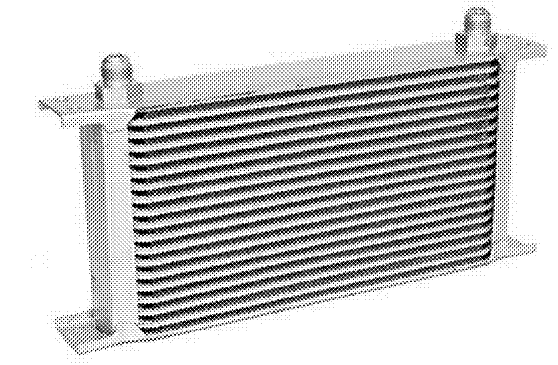
US9863704 — CHIP DRYER WITH INTEGRATED EXHAUST GAS TREATMENT — Pyrotek, Inc. (USA) — According to a first embodiment, a dryer for removing hydrocarbons and/or moisture from metal chips is provided. The dryer includes a top portion and a base portion. The top portion comprises an elongated tubular chamber containing a scrap conveyor. The base portion comprises a burner, a heat exchanger, a high temperature VOC elimination chamber and a vent for returning reduced VOC gasses to the top portion. The top portion is configured to receive the metal chips at an inlet and transport the metal chips to an outlet while receiving heated air from the base portion.

US9844805 — ALUMINUM IMPACT EXTRUDED BOTTLE WITH THREADED NECK MADE FROM RECYCLED ALUMINUM AND ENHANCED ALLOYS — Ball Corporation (USA) — The present invention relates generally to forming a threaded neck in a metal bottle manufactured by a process known as impact extrusion. More specifically, the present invention relates to methods, apparatus and alloy compositions used in the impact extrusion manufacturing of containers and other articles with sufficient strength characteristics to allow threading the container necks to receive a threaded closure on the threaded neck. In one embodiment of the present invention, a novel alloy is provided in the initial form of a metal slug and used to form a metallic container in an impact extrusion process, wherein the metallic container is of sufficient strength to thread the neck. The alloy in one embodiment has a composition comprised of a recycled 3105 or 3104 aluminum, and a relatively pure 1070 aluminum to form a novel recycled alloy. In another embodiment, a recycled aluminum alloy which utilizes 40% of 3104 alloy is blended with a 1070 alloy, and which comprises the following composition: approximately 98.47% aluminum; approximately 0.15% Si; approximately 0.31% Fe; approximately 0.09% Cu; approximately 0.41% Mn; approximately 0.49% Mg; approximately 0.05% Zn; approximately 0.02% Cr; and approximately 0.01% Ti.
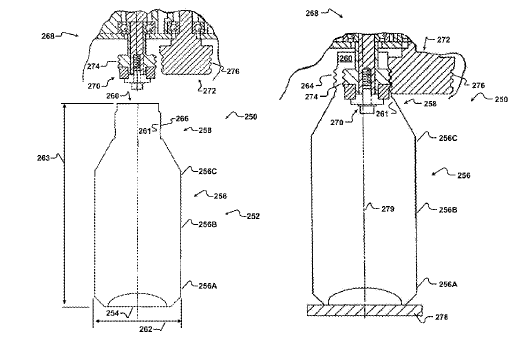
US9803922 — SYSTEM AND METHOD FOR MELTING LIGHT GAUGE SCRAP — Altek L.L.C. (USA) and Altek Europe Ltd. (Great Britain) — Light gauge aluminum scrap is intrinsically difficult to efficiently melt because aluminum and its alloys oxidize very readily. An exemplary furnace system for melting stock metal includes a main hearth and a side well subsystem, which includes a melting well disposed downstream of the main hearth for receiving flow from the main hearth, an input flow inducer disposed upstream of the melting well and downstream of the main hearth, and an output flow inducer disposed downstream of the melting well and upstream of the main hearth. The input flow inducer drives molten metal into the melting well, thereby forming a differential metal head in the melting well. The output flow inducer evacuates molten metal from an output conduit, thereby reducing counter-pressure at an output port of the melting well communicating with the output conduit. This allows atmospheric pressure to add to the differential metal head in the melting well, resulting in an increase in productivity of the side well subsystem and of the furnace system.
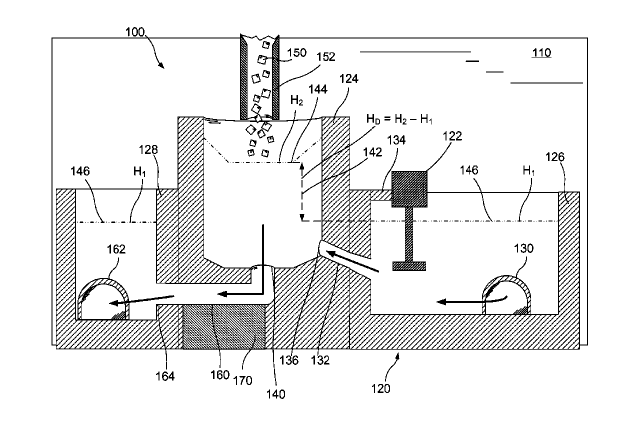
US9267214 — ALUMINUM RECOVERY PROCESS — Board of Trustees of the University of Alabama (USA) — Disclosed are processes and electrolytic cells that can be used to extract and thereby recover aluminum from aluminum-containing waste, including an aluminum dross that is suitable for disposal in a landfill. The disclosed processes and cells use ionic liquids as an electrolyte. Disclosed are electrolytic cells for recovering aluminum metal from aluminum-comprising dross. The disclosed cells can be adapted for either a batch process for recovery of aluminum or for a continuous process for recovery of aluminum. A first embodiment relates to a batch process wherein the anode comprises aluminum-comprising dross. A further embodiment comprises a process wherein aluminum-comprising dross is continuously fed into the electrolytic cell.
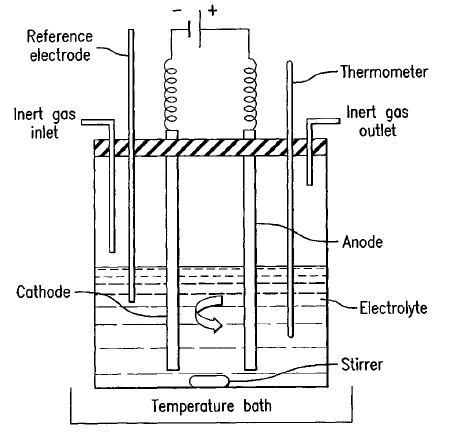
Canadian Patents
CA3027093 — METHOD FOR REDUCING SALT USAGE IN ALUMINUM RECYCLING — Air Products and Chemicals, Inc. (USA) — A method of melting an aluminum charge having no more that 4% salt by mass, including during a melting phase, introducing fuel and oxidant via a burner operating at a first firing rate, the fuel and oxidant reacting to form a combustion zone above the aluminum charge, terminating the melting phase and commencing a transition phase when the aluminum charge is nearly completely molten, during the transition phase, reducing the firing rate of the burner to a second firing rate lower than the first firing rate, introducing a non-oxidizing gas at a first velocity to form a non-oxidizing zone between the combustion zone and the aluminum charge, and allowing the aluminum charge to become completely molten, and terminating the transition phase and commencing a tapping phase after the aluminum charge has become completely molten, and during the tapping phase, pouring the molten aluminum charge out of the furnace.
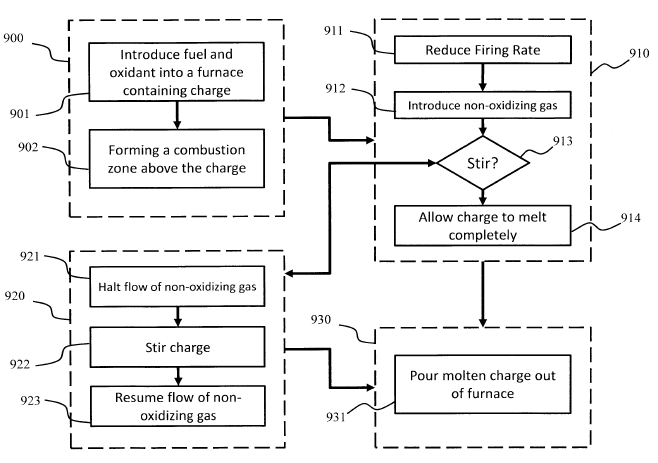
CA2985088 — HIGH-SPEED BLOW FORMING PROCESS TO SHAPE ALUMINUM CONTAINERS USING 3XXX ALLOYS WITH HIGH RECYCLED CONTENT — Novelis Inc. (USA) — Provided herein is a high-speed blow forming process for shaping aluminum containers using 3xxx can body stock alloys with high recycled content, as well as articles made by that process. A process for shaping aluminum containers as described herein includes the sequential steps of blanking out a disk from a sheet of a 3xxx series aluminum alloy; forming a bottle preform by drawing, redrawing, ironing, and doming the disk; placing the preform into a mold cavity; applying an axial load to the preform; and injecting an inert gas into the interior of the preform with sufficient pressure until the preform expands to fill the mold cavity.
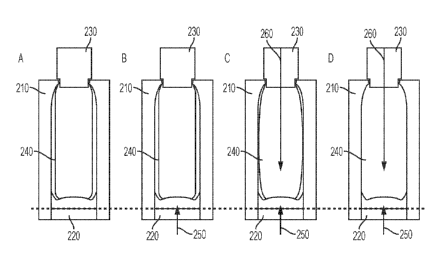
CA2978328 — ALUMINUM ALLOYS FOR HIGHLY SHAPED PACKAGING PRODUCTS AND METHODS OF MAKING THE SAME — Novelis Inc. (USA) — The disclosure is related to new, formable and strong aluminum alloys for making packaging products such as bottles and cans. The present invention is related to a new aluminum alloy system for the aluminum bottle application. Both the chemistry and manufacturing processes of the alloy have been optimized for the high speed production of aluminum bottles. The present invention solves these problems and provides alloys with desired strength, formability, and a high content of recycled aluminum metal scrap. The higher content of recycled metal decreases Content of prime aluminum and production cost. These alloys are used to make packaging products such as bottles and cans that have relatively high deformation requirements, relatively complicated shapes, variable strength requirements and high recycled content. In various aspects, the alloys comprise a recycled content of at least 60 wt. %, 65 wt. 10, 70 wt. %, 75 wt. %, 80 wt. %, 82 wt. %, 85 wt. %, 90 wt. %, or 95 wt. %.
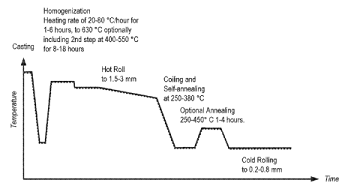
CA2888542 — ALUMINUM ALLOY FOR VEHICLE AND PART OF VEHICLE — Honda Motor Co., Ltd. (Japan) — There is provided an aluminum alloy for a vehicle and a part for a vehicle in which toughness suitable for the part for a vehicle can be secured even when aluminum material containing impurities, as may be present in recycled material, such as Fe, Cu or the like is used. The aluminum alloy for a vehicle contains Fe in the range from not less than 0.2 wt% to not more than 1.0 wt%, Mn in the range from not less than 0.01 wt% to not more than 0.7 wt%, Si and Cu, and Al and unavoidable impurities as residuals, and the size of intermetallic compounds is equal to 30 µm or less.
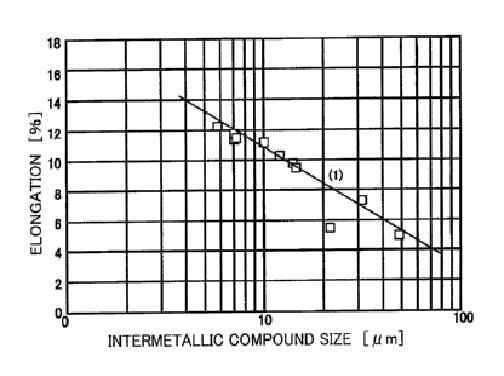
CA2873724 — SAMPLING METHOD AND SAMPLING DEVICE OF RECYCLED RAW MATERIAL, ANALYSIS SAMPLE OF RECYCLED RAW MATERIAL, AND EVALUATION METHOD OF RECYCLED RAW MATERIAL — Mitsubishi Materials Corporation (Japan) — Provided is a sampling method of recycled raw material, the method including: a process (S3) of primarily crushing recycled raw material; a process (S4 to S7) of separating primarily crushed raw material into three components, “scrap iron”, “scrap aluminum”, and “recycled raw material component other than scrap iron and scrap aluminum” and performing primary sample reductions of the three components; a process (S8 to S10) of secondarily crushing “the recycled raw material component other than scrap iron and scrap aluminum”, which is subjected to the primary sample reduction, and performing a secondary sample reduction of “recycled raw material component other than scrap iron and scrap aluminum” which is secondarily crushed; a mixing process (S12) of mixing “scrap iron” and “scrap aluminum” with “the recycled raw material component other than scrap iron and scrap aluminum” which is subjected to the secondary sample reduction at a mixing ratio corresponding to a weight ratio of “scrap iron”, “scrap aluminum”, and “the recycled raw material component other than scrap iron and scrap aluminum”, in which a mixture obtained in the mixing process is set as an analysis sample.
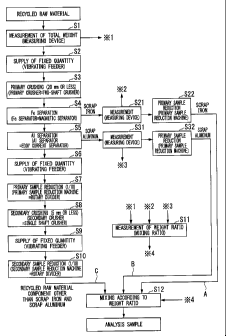
CA2842587 — METHOD FOR THE PRODUCTION AND THE PURIFICATION OF MOLTEN CALCIUM ALUMINATE USING CONTAMINATED ALUMINUM DROSS RESIDUE — 9255-8444 Quebec Inc. Dba Metkem Innovation (Canada) — The present invention provides a process for the preparation of pre-melted calcium aluminate for iron and steel treatment and protection by the fusion of aluminum dross residues, usually referred to as non metallic products (NMP) containing variable levels of aluminum (Al) and aluminum nitride (AIN) with calcium carbonate at high temperature, under oxidizing atmosphere. It further relates to the purification of the molten calcium aluminate from some contaminants present in the dross residue.
CA2823238 — METHOD FOR MELTING A SOLID CHARGE — l’Air Liquide Societe Anonyme pour l’Etude et l’Exploitation des Procedes Georges Claude (France) — A simple, compact burner achieves a more optimal melting of a solid charge followed by performance of combustion under distributed combustion conditions. The burner achieves this by fluidically bending the flame towards the solid charge during a melting phase with an actuating jet of oxidant, redirecting the flame in a direction away from the charge, and staging injection of oxidant among primary and secondary portions during a distributed combustion phase.
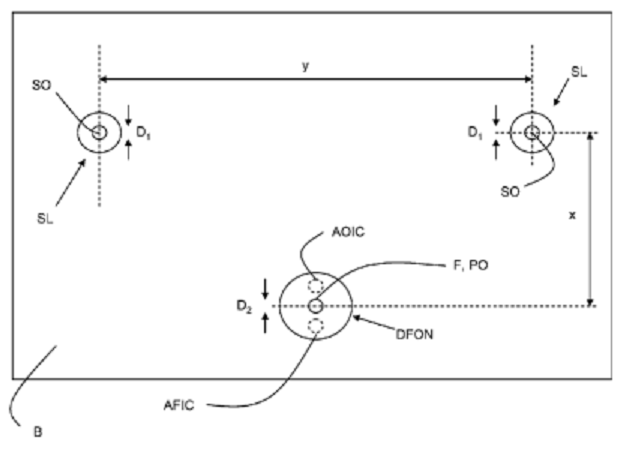
CA2823223 — SCRAP METAL SORTING SYSTEM — Huron Valley Steel Corporation (USA) — An apparatus and a method for sorting scrap metal containing at least two categories of metals are provided. An x-ray beam is directed towards at least a portion of a particle of scrap metal. Backscattered x-rays, forward scattered x-rays, and transmitted x-rays from the particle are measured and input into a classifier, such as a database with a cutoff plane. The scrap metal is sorted into a first category and a second category on the scrap metal by a controller. An x-ray source for a scanning system is provided with an electron beam generator, an electromagnetic beam focusing coil, a pair of saddle shaped beam steering coils, and a target foil to create a scanning x-ray beam along a plane.
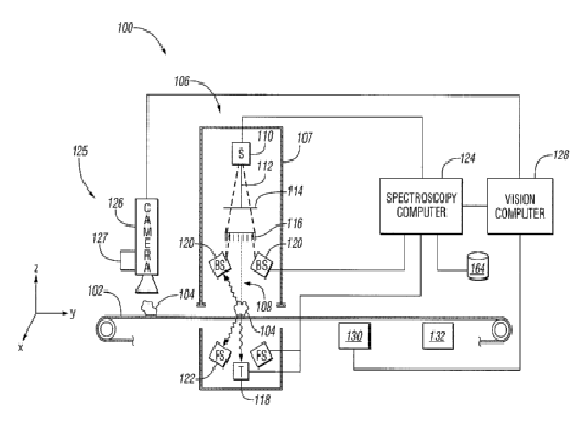
CA2800207 — DROSS COOLING SYSTEM AND COOLING METHOD — Altek L.L.C. (USA) — A method of cooling aluminum dross, comprising: placing the dross into a receptacle of a material container; and placing a cooling head on top of the dross so that a downwardly projecting portion of the cooling head engages the dross and locally deforms the dross under the weight of the cooling head; wherein: the cooling does not include the use of a dross press assembly to exert mechanical force to the dross prior to placing the cooling head on the dross; and the cooling head seals against the material container to at least partially encapsulate the dross and extinguish oxidation of the dross, and the seal is formed by engagement of an upper rim of the material container into a channel of the cooling head, wherein the channel is formed inside the upper rim of the material container by a portion of the cooling head that is thicker than a portion of the cooling head located above the upper rim.
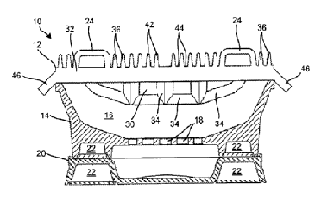
CA2806432 — PROCESS FOR MELTING SCRAP METAL — l’Air Liquide Societe Anonyme pour l’Etude et l’Exploitation des Procedes Georges Claude (France) — Process for melting scrap metal in a furnace comprising the steps of feeding a charge of solid scrap metal to the furnace, supplying fuel and an oxygen-rich oxidant to the furnace and combusting the fuel with the oxidant to generate heat inside the furnace, melting the charge of solid scrap metal in the furnace by means of the heat, withdrawing the molten metal from the furnace. Following the step of feeding the charge of solid scrap metal to the furnace, the fuel is combusted with the oxidant so as to generate one or more visible flames in the furnace above the charge and before the step of withdrawing the molten metal from the furnace, the fuel is combusted with the oxidant so as to generate flameless combustion in the furnace above the molten metal.
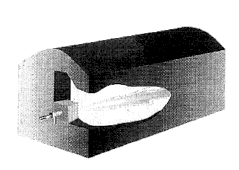
CA2685334 — SCRAP SHAPE RETENTION — Honda Motor Co., Ltd. (Japan) — Disclosed herein is a sheet metal stamping device and method for substantially inhibiting recoil from a neutral stamped position of a scrap part region. A sheet metal stamping device for stamping a sheet metal part comprising a first die body and a second is provided wherein the first die body and the second die body are in operable communication for forming the sheet metal part from a sheet metal blank. The sheet metal part includes at least one scrap region formed therein which is prone to recoil from a neutral stamped position. The first die body and the second die body have complementary elongate bead-forming regions located for forming an elongate bead region in the scrap region, and the elongate bead-forming regions are configured such that the elongate bead substantially inhibits recoil or springback of the scrap region from the neutral stamped position when the scrap region is severed from the part. A method of stamping a sheet metal part having at least one scrap region prone to recoil formed therein utilizing the device and severing the scrap region is also disclosed.
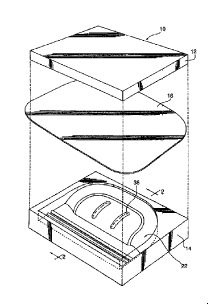
CA2598472 — A METHOD FOR SMELTING FRAGMENTIZED ALUMINUM ALUMINUM SCRAP — HERTWICH ENGINEERING GMBH (Austria) — A method is described for smelting fragmentized aluminum scrap, with the aluminum scrap to be smelted being molten in a furnace after thermal pre-treatment in a hot-gas stream. In order to provide advantageous process conditions it is proposed that the aluminum scrap is subjected at first in a continuous flow of material to the thermal treatment and is smelted thereafter, and that from the hot gas stream guided in a circulation for the thermal treatment of the aluminum scrap a partial stream is branched off and is guided into the furnace.
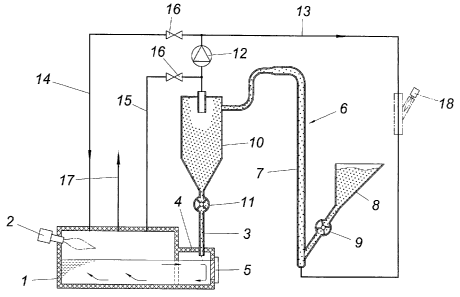
CA2517605 — METHOD FOR RECYCLING ALUMINUM ALLOY WHEELS — House Of Metals Company Limited (Canada) — A method of recycling aluminum alloy wheels, the method comprises providing a feed of aluminum alloy wheels of a particular alloy; subjecting the aluminum alloy wheels to x-ray separation to remove contaminates; fragmenting the aluminum alloy wheels into a plurality of pieces; subjecting the pieces to magnetic separation to produce pieces having a reduced iron content; and, subjecting the pieces having a reduced iron content to shot blasting to produce shot blasted pieces. An optional eddy treatment step may be used.
